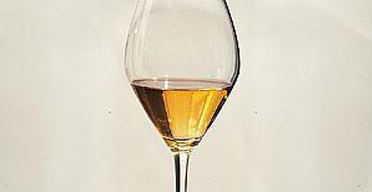NEURAS, July 20 – It’s not a mirage on the edge of one of the world’s oldest deserts, though it may seem so at first: a lush vineyard producing wine that is worth the hot and dusty trip.
Somehow, Allan Walkden-Davis has created this oasis in the Namib desert region in the southwestern corner of Africa, one of the driest places on Earth.
His production of 3,000 bottles per year has begun to attract attention as his wine-making skills — and mastery of the seemingly unusual conditions for a vineyard — have improved.
When he discovered the place in 1996, several years of drought had killed off much of what vegetation had grown there.
But a surprise awaited him, with five sources of water springing from a geological fault that a German farmer had used at the start of the 20th century.
"Table grapes were still growing from very old vines carrying huge bunches," Walkden-Davis said.
The road to the vineyard stretches hundreds of kilometres through arid, rocky hills and between sand dunes.
He and his wife Sylvia first bought the 14,000-hectare (35,000-acre) farm at Neuras — the land of abandoned water in the local Nama language — simply because of a "passion for this area of Namibia", he said.
The former managing director of Shell Namibia, British-born but raised in Zimbabwe, added a love for the desert to his list of other interests, including ornithology and history.
He said that at the time in the region "people would sell farms to move to the cities. It was no longer viable."
— What he found was a jewel of a vineyard —
Karakul sheep farms where the animals are killed at birth to sell their pelts to luxury leather goods makers were among the few sources of revenue in the region.
But Walkden-Davis, who is in his early 60s, went to work, with reeds and palm trees being planted to provide shade.
"They capture the humidity of the breezes that come from the Atlantic, across the sand dunes, and spread it throughout the oasis," he said.
The land was cleared and Shiraz grapes, later joined by Merlot, were planted over a hectare, with vines watered by the century-old irrigation canals that had finally been restored.
There was a problem, however. After a life spent in the oil industry, Walkden-Davis knew next to nothing about wine-making.
His first attempt, in 2001, was "a disaster", he said, laughing as he recalled it.
But afterward, he attended classes at least once per year in the wine lands of South Africa, and his modest operation has begun attracting the attention of connoisseurs and professionals from across the world, who provide tips and advice.
Walkden-Davis has decided to only sell his Shiraz, as well as a unique Shiraz-Merlot blend called Namib Red with hints of strawberry, to visitors in person, after they make the trek into the desert.
In other words, the taste must be earned.
Abrie Bruwer, a South African wine expert from the Cape wine region, was among those who came to visit. What he found was a jewel of a vineyard: shallow land on a bed of rocks, soil with an ideal pH level and water as pure as any underground spring.
People have begun to seek out the wine, which carries unique qualities thanks to the relatively small-scale production and the particular attention paid to the fermentation process, said Walkden-Davis.
He intends to preserve the wine’s rarity by keeping the vineyard small, but that doesn’t mean all expansion has been ruled out. He is planning to increase production to three extra hectares.



































